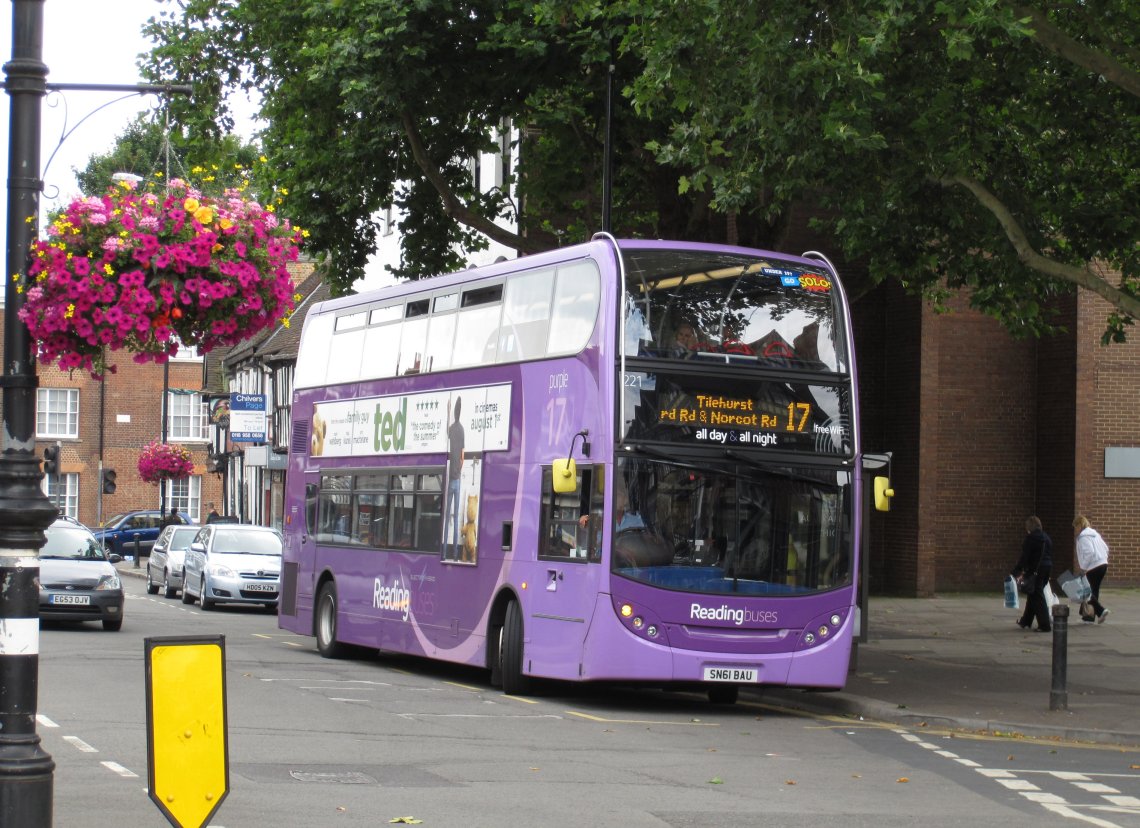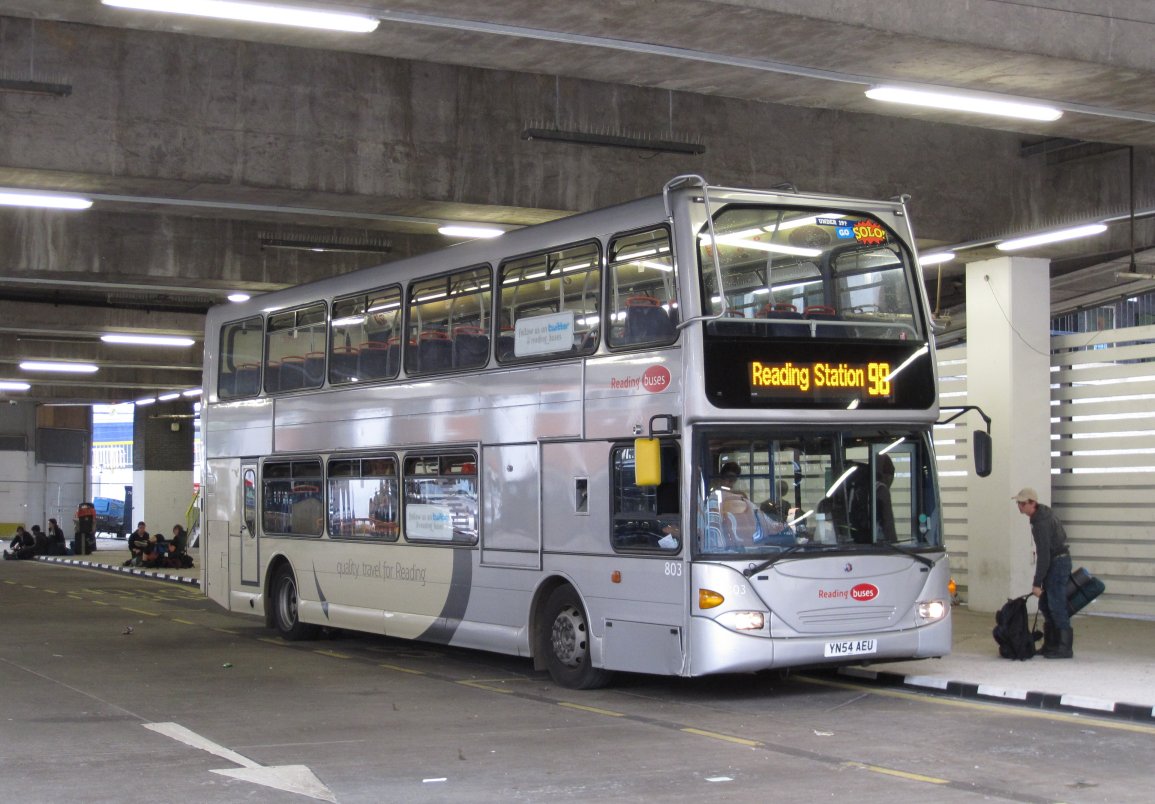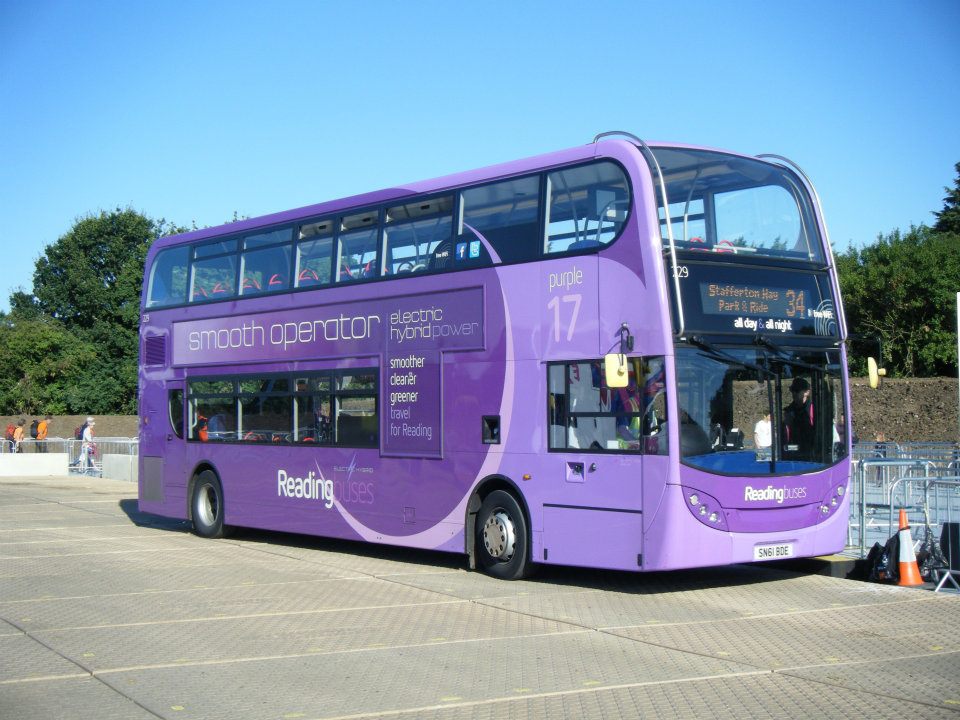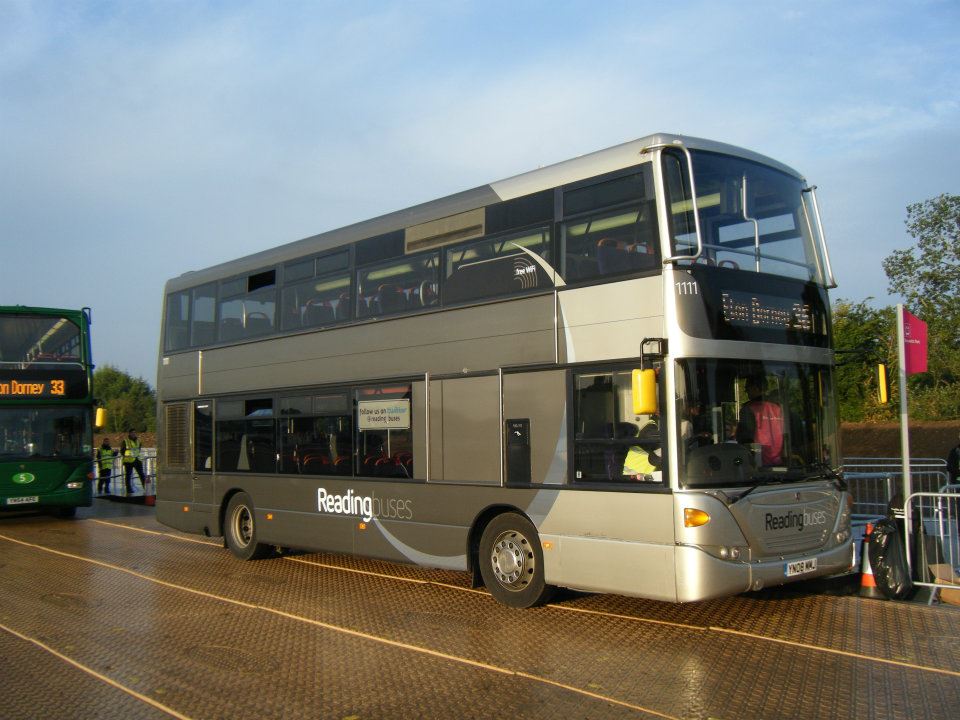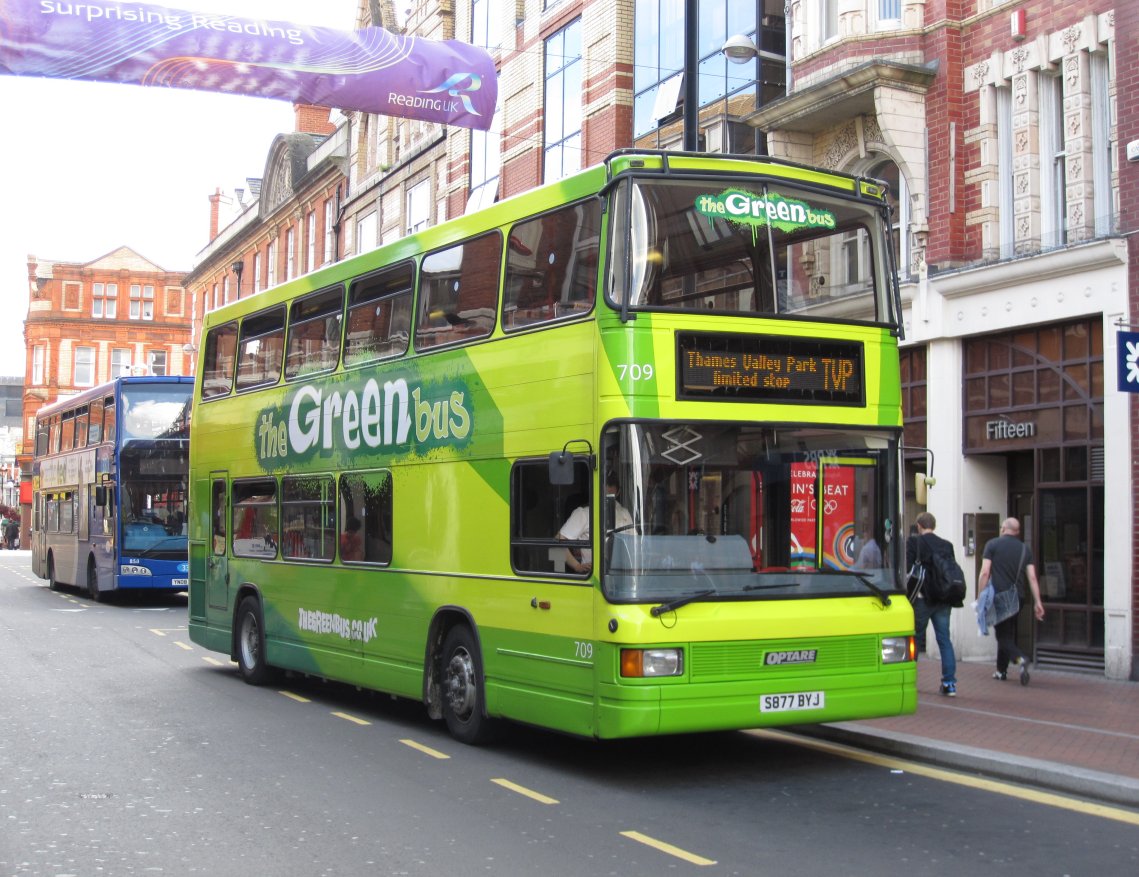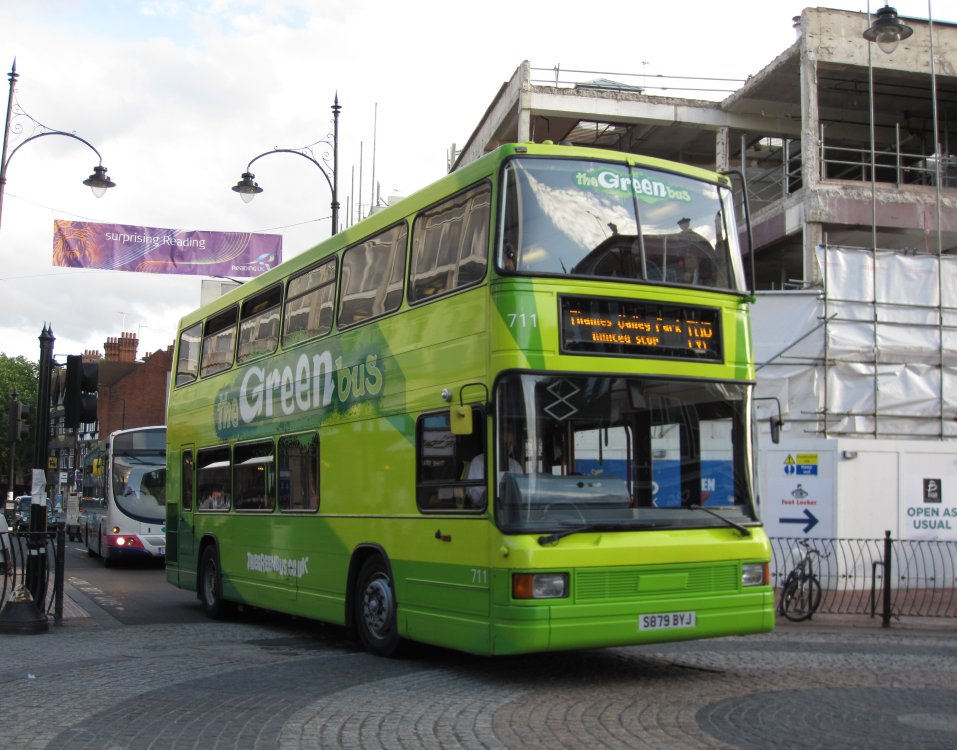
www.buszone.co.uk
August 2012
< Last Month | News Archive | Next Month >
Simplified Young Persons Fares
27-08-12
Since around 2005/6 Reading Buses have run a smartcard scheme called Readi-ID to allow young people to travel at child rate. Originally it was introduced to allow children aged 16, 17 and 18 to travel at child rate whilst still in full time education, where the normal walk-on child fare was only available until the 16th birthday. From 23rd October 2006 the card was made mandatory from the age of 14 and strongly recommended from the start of secondary school age 11 to avoid any queries about age when boarding. Initially there was a charge of £5, but the charge was soon dropped after the card was extended to ages 11-16.
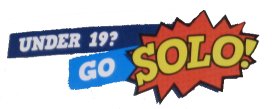
Now, from 1st August Reading have abandoned the scheme and will simply allow anybody aged under 19 to travel at child rate. To highlight this change, new lettering has appeared overnight on many of the double deckers in the fleet.
861 sporting the new lettering today alongside it's new ColourBus livery for Vodafone.
221 demonstrating their application on the Enviro 400Hs.
803 was on Rock Festival service 98 today (sporting the new lettering). This year the service was relegated to the old bus station, it not quite being a year yet since Station Hill was closed.
Reading Orders Gas Powered Fleet
25-08-12
On Wednesday 22nd August Reading Transport announced a £3.5 million order for a fleet of 19 new Scania KUB270 / Alexander Dennis Enviro 300GS vehicles.
The gas-powered buses have been developed jointly by Scania and Alexander Dennis, and will be the first of the type to enter service in the United Kingdom. They will operate on routes 9 & 11 and a new combined South Reading contract including the Madejski Stadium FastTrack, Green Park FastTrack and NightTrack services recently awarded by Reading Borough Council to commence on 5th November. No date has been given for the expected arrival of the vehicles however.
Over the course of its long history, Scania has produced gas-powered vehicles for almost 100 years, with one of the earliest recorded examples being buses adapted to run on producer gas during the First World War years. Scania first produced a dedicated gas bus engine in 1940. In more recent times the company has supplied in excess of 3,800 gas engines for various applications in a number of countries worldwide. These include fleets operating in the Swedish municipalities of Uppsala, Malmö and Helsingborg as well as vehicles in Madrid, Spain and Brisbane Australia.
Based on the 12-metre Scania KUB 4x2 chassis, the new vehicles will be powered by Scania's 270 horsepower EEV 9.3-litre five-cylinder, energy efficient lean burn gas engine, which is capable of operating on either Compressed Natural Gas (CNG) or Bio Natural Gas (BNG). The engine offers high efficiency and low fuel consumption with no need for exhaust gas recirculation (EGR). It is based on the same platform as Scania's modular-build 9.3-litre diesel engine, which limits the number of new components required for the low entry gas chassis to around 40 items.
The vehicles will feature single-deck 40-seat Enviro E300NG bodywork, designed and engineered by Alexander Dennis, Scania's gas bus development partner. A third company closely involved in the project is the Gas Bus Alliance, which will provide the infrastructure and fuel supply to Reading Buses. Under Reading Buses’ contract with the Gas Bus Alliance a kilogramme of bio-methane will be injected into the national gas grid for every kilogramme of gas used by each vehicle in the company's new fleet. As such, the entire operation qualifies for carbon-neutral status.
Let the Games Commence
02-08-12
Reading Transport have been providing 18 vehicles a day for use on special shuttle services to the rowing events at Eton Dorney, along with vehicles from First Games Transport and The Green Bus, Birmingham. The buses are being used on a network of seven services:
31 - Windsor Riverside Station
32 - Slough Rail Station
33 - Maidenhead Station
34 - Stafferton Way P&R
35 - Upton Park (Slough) P&R
36 - Braywick Park P&R
37 - Windsor Great Park P&R
with Reading vehicles operating on the three routes serving Maidenhead - 33, 34 and 36 with fully programmed destination displays.
229 at Eton Dorney today. Thanks to Steve Doel for this photo.
1111 with 810 behind at Eton Dorney today. Thanks to Steve Doel for this photo.
The vehicles have had all third party advertising removed from their advert frames, and are being drawn primarily from the generic liveried Scania OmniDekkas and OmniCities, plus branded hybrids 207, 218, 229, 230 and route 5 branded OmniDekka 810 made spare by the summer timetables. The generic hybrids 208/9 and generic Olympuses 840/60-1 don't appear to have been used. Amongst the Birmingham Green Bus vehicles in use are former Reading 471/5/6.
Reading's vehicles have been made available thanks to the now annual summer service reductions, school holidays and lighter traffic congestion. However, it has left the remaining double deck fleet thin on the ground, so the two double deck workings on the Thames Valley Park shuttle have been temporarily converted to step entrance Optare Spectras.
Temporary bus 709 at a temporary stop for TVP in Station Road (due to the current closure of Blagrave Street for sewer repairs - more on this in a future news item).
711 crossing Broad Street, with the extensive remodelling currently taking place to the former Virgin Megastore in the Broad Street Mall behind. 708 was observed on TVP earlier in the week.
< Last Month | News Archive | Next Month >

